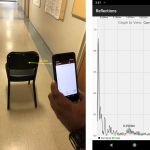Generating a Classroom Pulse from Active Windows on Student Computers
Abstract
With technology embedded in an increasing number of educational contexts, it is prudent to identify ways in which instructors can leverage technology to benefit their pedagogical practices. The purpose of this study was to determine if information about students’ active windows on their personal computers could provide actionable information to inform real-time instructional interventions and post-lecture reflection on practices. The active window approach mitigates issues with prior data collection methods and provides an opportunity to capture complete, real-time student computer usage without the need to install spyware. Based on observing 68 first-year engineering students and 32 second-year engineering students in large engineering lectures, we generated error rates of 4.28% with a 95% confidence interval of [2.81%, 6.04%] in a structured computer use course setting and 6.89% with [4.42%, 10.17%] in a semi-structured use setting.
